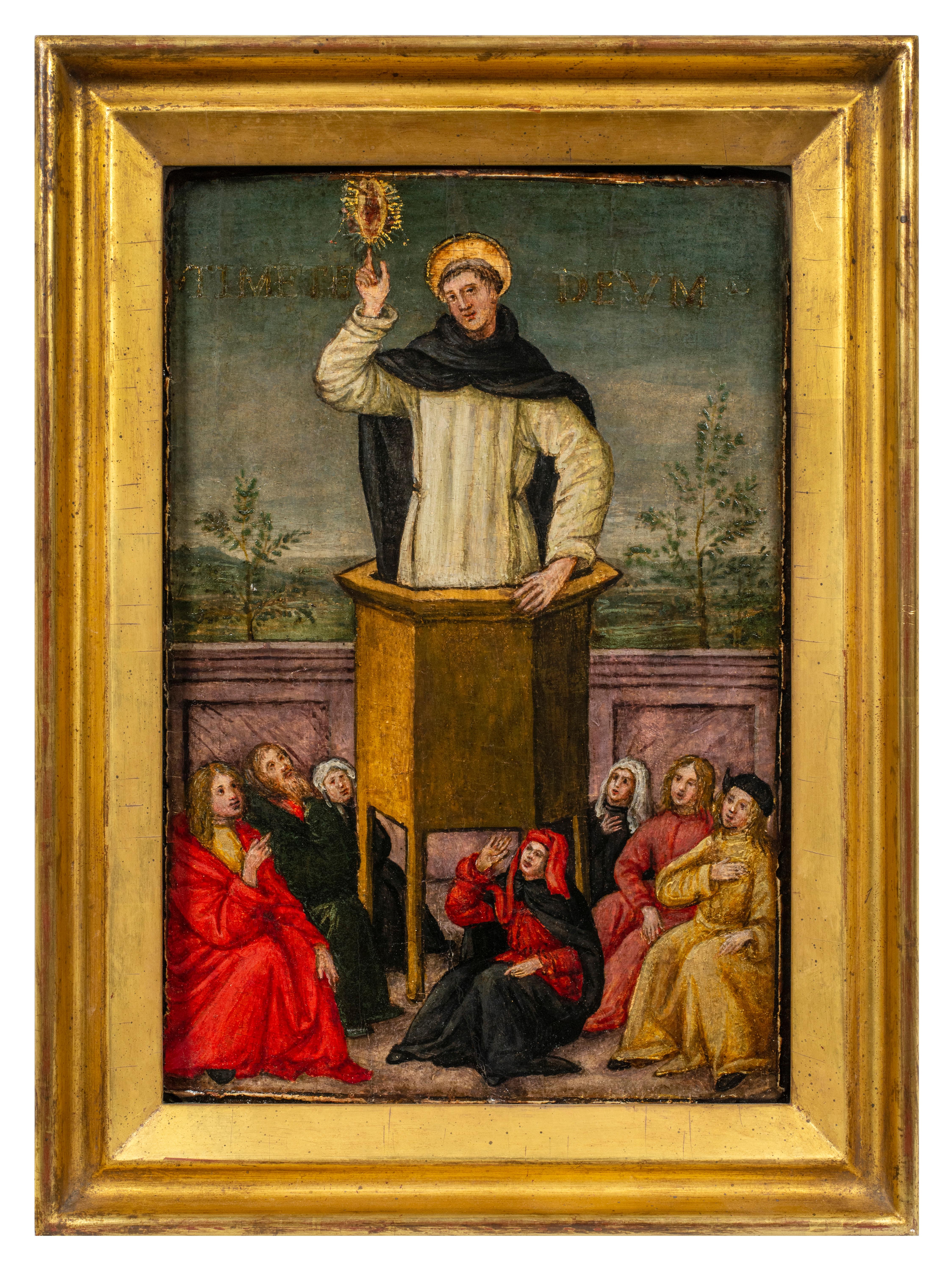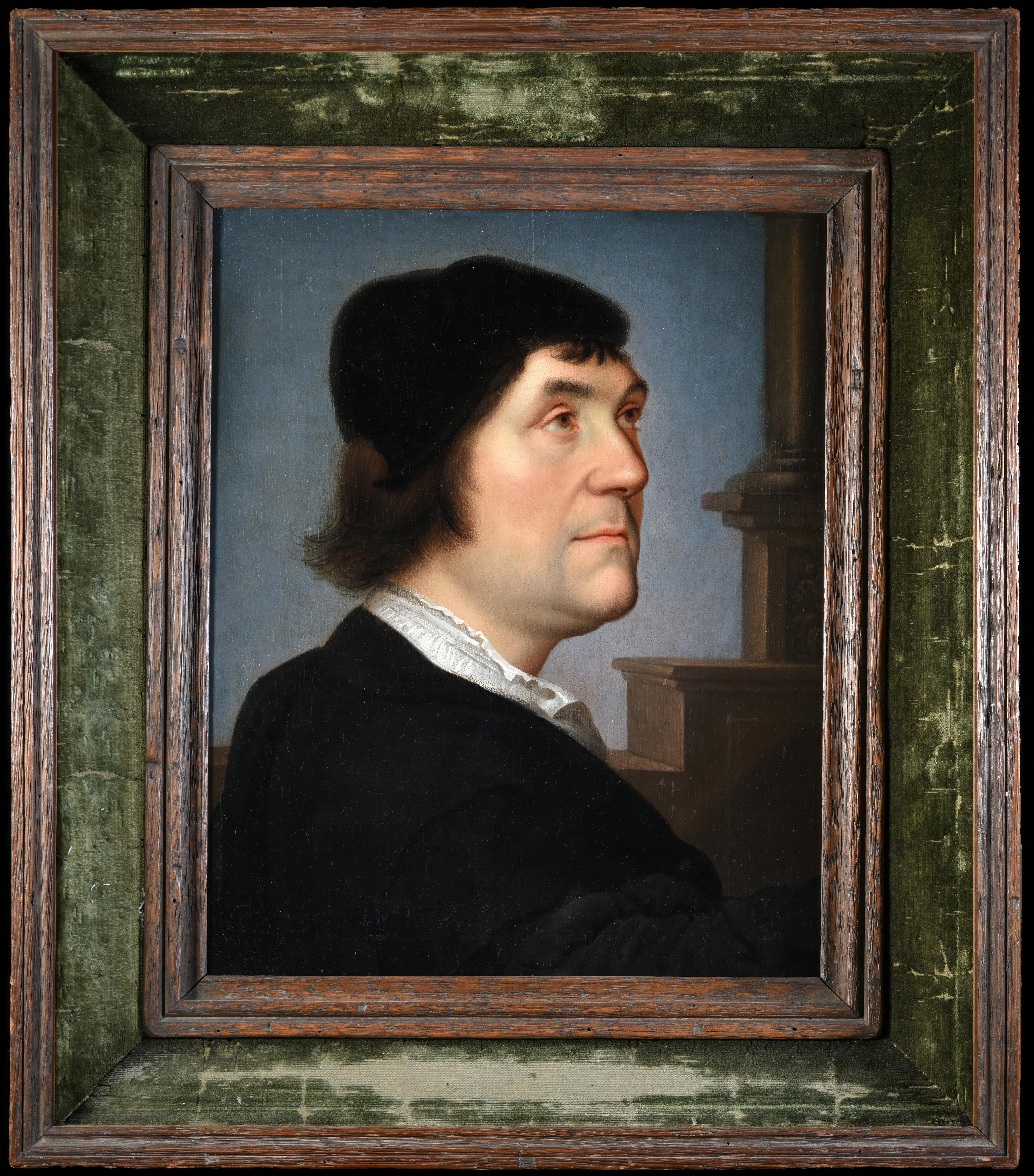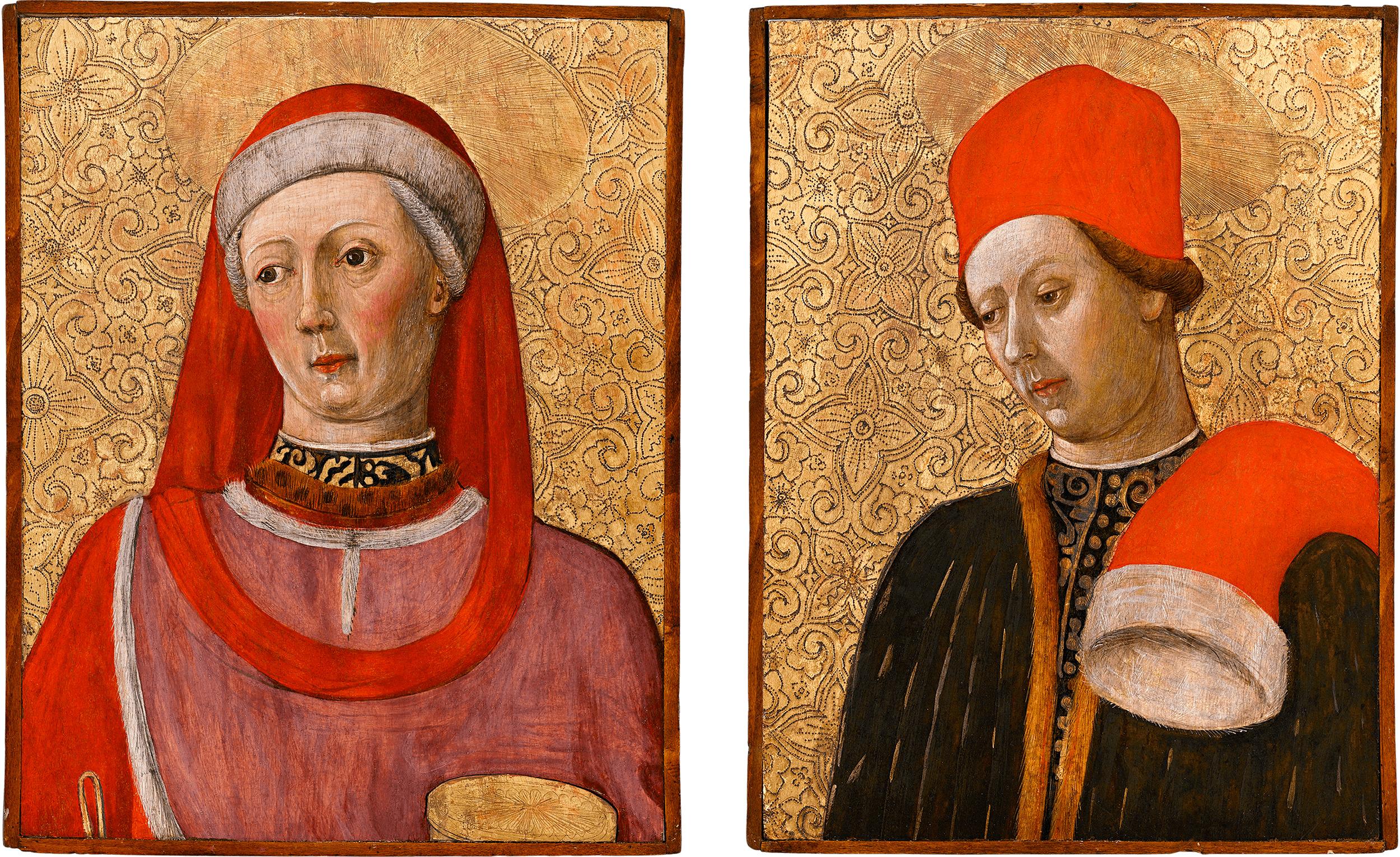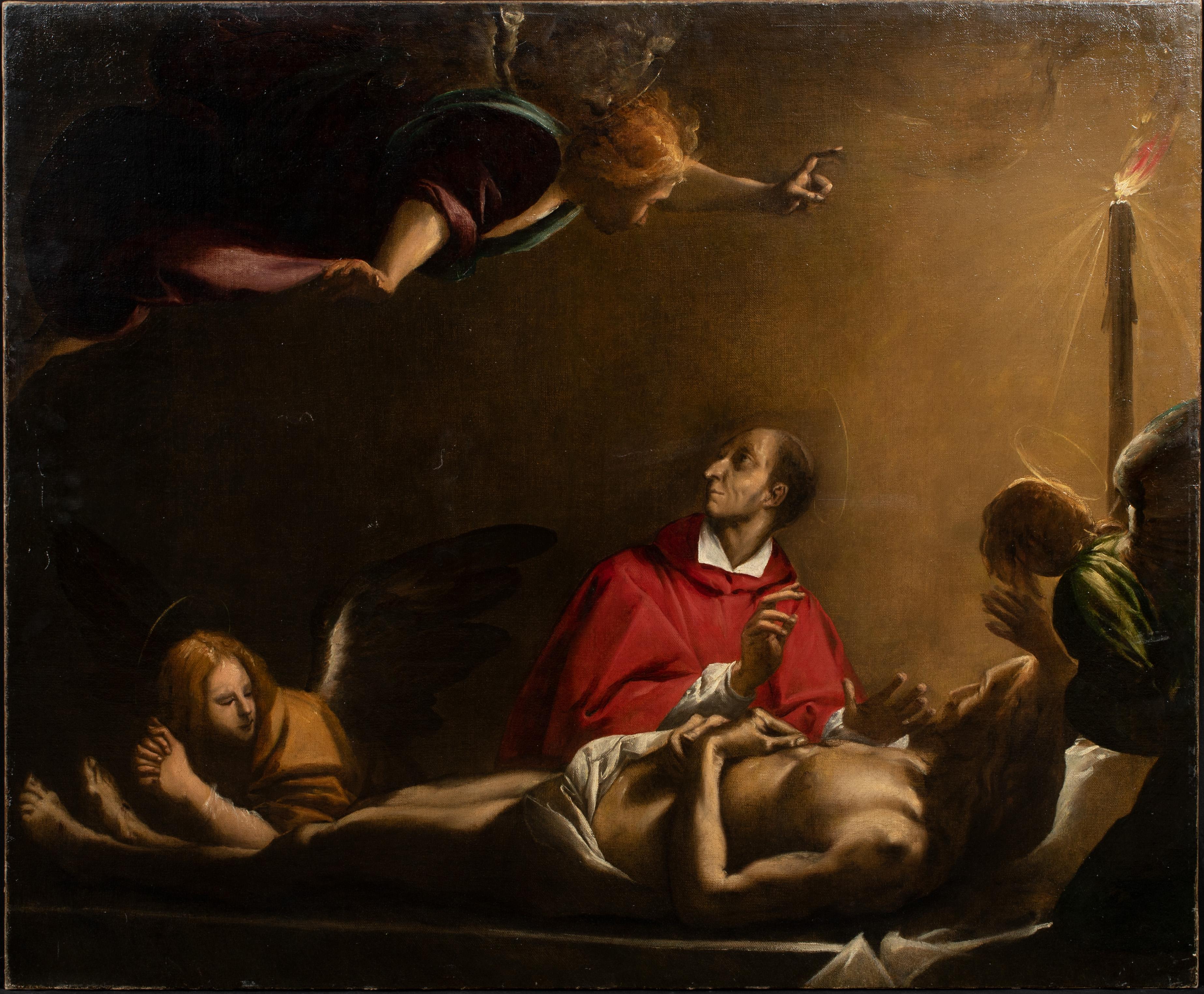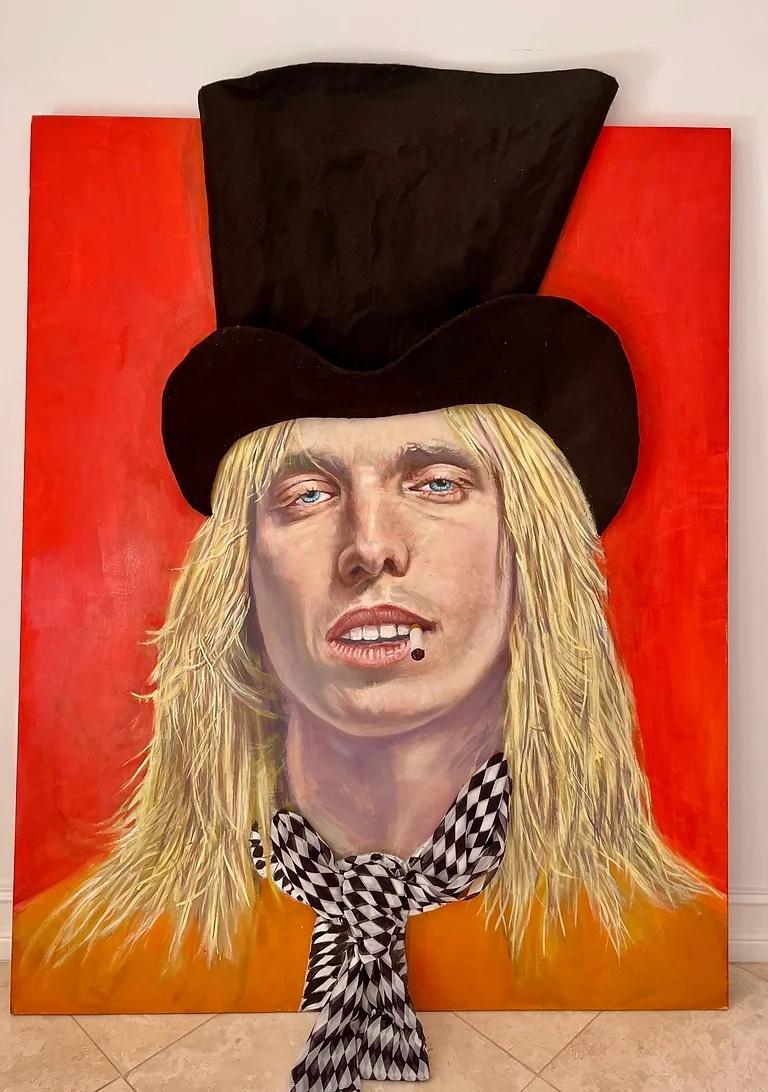Items Similar to Portrait of an Italian Noblewoman
Want more images or videos?
Request additional images or videos from the seller
1 of 2
Portrait of an Italian NoblewomanLate 15th century
Late 15th century
About the Item
15th century, Italian
Circle of Antonio del Pollaiuolo (1429-1498)
Portrait of an Italian Noblewoman
Oil and tempura on poplar panel
With partial inscription: ALZETAPIN
Provenance:
The collection of Sir David Scholey SBE FRSA
Dimensions:
10 in. (H) x 7 in. (W)
- Creation Year:Late 15th century
- Dimensions:Height: 10 in (25.4 cm)Width: 7 in (17.78 cm)
- Medium:
- Movement & Style:
- Circle Of:Antonio del Pollaiuolo (Italian)
- Period:
- Condition:Condition report available upon request.
- Gallery Location:London, GB
- Reference Number:1stDibs: LU673314324082
About the Seller
5.0
Vetted Seller
These experienced sellers undergo a comprehensive evaluation by our team of in-house experts.
Established in 1990
1stDibs seller since 2017
40 sales on 1stDibs
Typical response time: 1 to 2 days
- ShippingRetrieving quote...Ships From: London, United Kingdom
- Return PolicyA return for this item may be initiated within 1 day of delivery.
More From This SellerView All
- 19th Century Oil Painting Portrait of a MuseLocated in London, GBJohn Opie RA (1761-1807, English) c. 1802 Oil on canvas Canvas dimensions 36 x 32 inches Framed dimensions 46.5 x 43.25 inches Original gilded period frame. John Opie was a Corni...Category
Early 19th Century Portrait Paintings
MaterialsOil
- 20th Century Oil Painting Impressionist Portrait of Mother and DaughterBy Georges PicardLocated in London, GBA beautiful french salon double portrait. We adore the wallpaper in the background and the whole in its frame superchic.Category
Early 20th Century Impressionist Portrait Paintings
MaterialsOil
- Stunning 17th Century Oil Painting - Study of a Head of a ManBy Anthony van DyckLocated in London, GBStudio of Sir Anthony Van Dyck (1599-1641, Flemish) Study of a Head of Man Circa 1627-32, Van Dyck’s second Antwerp period Oil on paper, laid down on canvas Dimensions 15 x 14 inches...Category
17th Century Old Masters Portrait Paintings
MaterialsOil
- 18th C. Portrait of the 4th Earl of Sandwich a View of Constantinople BeyondLocated in London, GBJohn Montagu, 4th Earl of Sandwich (13 November 1718 – 30 April 1792) Attributed to George Knapton (1698-1778) Dressed in the Turkish manner, stand...Category
18th Century Old Masters Figurative Paintings
MaterialsOil
- Striking 18th Century Portrait of the 12th Earl of CaithnessBy Sir Henry RaeburnLocated in London, GBSir Henry Raeburn (1756-1823) James Sinclair, 12th Earl of Caithness (1766-1823) Oil on Canvas 30 X 25 inches Unframed 37 X 32 inches framed Sir Henry Raeburn FRSE RA RSA (4 March 1756 – 8 July 1823) was a Scottish portrait painter and Scotland's first significant portrait painter since the Union to remain based in Scotland. He served as Portrait Painter to King George IV in Scotland. Raeburn was born the son of a manufacturer in Stockbridge, on the Water of Leith: a former village now within the city of Edinburgh. He had an older brother, born in 1744, called William Raeburn. His ancestors were believed to have been soldiers, and may have taken the name "Raeburn" from a hill farm in Annandale, held by Sir Walter Scott's family. Orphaned, he was supported by William and placed in Heriot's Hospital, where he received an education. At the age of fifteen he was apprenticed to the goldsmith James Gilliland of Edinburgh, and various pieces of jewellery, mourning rings and the like, adorned with minute drawings on ivory by his hand, still exist. Soon he took to the production of carefully finished portrait miniatures; meeting with success and patronage, he extended his practice to oil painting, at which he was self-taught. Gilliland watched the progress of his pupil with interest, and introduced him to David Martin, who had been the favourite assistant of Allan Ramsay the Latter, and was now the leading portrait painter in Edinburgh. Raeburn was especially aided by the loan of portraits to copy. Soon he had gained sufficient skill to make him decide to devote himself exclusively to painting. George Chalmers (1776; Dunfermline Town Hall) is his earliest known portrait. In his early twenties, Raeburn was asked to paint the portrait of a young lady he had noticed when he was sketching from nature in the fields. Ann was the daughter of Peter Edgar of Bridgelands, and widow of Count James Leslie of Deanhaugh. Fascinated by the handsome and intellectual young artist, she became his wife within a month, bringing him an ample fortune. The acquisition of wealth did not affect his enthusiasm or his industry, but spurred him on to acquire a thorough knowledge of his craft. It was usual for artists to visit Italy, and Raeburn set off with his wife. In London he was kindly received by Sir Joshua Reynolds, the president of the Royal Academy, who advised him on what to study in Rome, especially recommending the works of Michelangelo, and gave Raeburn letters of introduction for Italy. In Rome he met his fellow Scot Gavin Hamilton, Pompeo Girolamo Batoni and Byers, an antique dealer whose advice proved particularly useful, especially the recommendation that "he should never copy an object from memory, but, from the principal figure to the minutest accessory, have it placed before him." After two years of study in Italy he returned to Edinburgh in 1787, and began a successful career as a portrait painter. In that year he executed a seated portrait of the second Lord President Dundas. Examples of his earlier portraiture include a bust of Mrs Johnstone of Baldovie and a three-quarter-length of Dr James Hutton: works which, if somewhat timid and tentative in handling and not as confident as his later work, nevertheless have delicacy and character. The portraits of John Clerk, Lord Eldin, and of Principal Hill of St Andrews belong to a later period. Raeburn was fortunate in the time in which he practised portraiture. Sir Walter Scott, Hugh Blair, Henry Mackenzie, Lord Woodhouselee, William Robertson, John Home, Robert Fergusson, and Dugald Stewart were resident in Edinburgh, and were all painted by Raeburn. Mature works include his own portrait and that of the Rev. Sir Henry Moncrieff Wellwood, a bust of Dr Wardrop of Torbane Hill, two full-lengths of Adam Rolland of Gask, the remarkable paintings of Lord Newton and Dr Alexander Adam in the National Gallery of Scotland, and that of William Macdonald of St Martin's. Apart from himself, Raeburn painted only two artists, one of whom was Sir Francis Leggatt Chantrey, the most important and famous British sculptor of the first half of the 19th century. It has recently been revealed that Raeburn and Chantrey were close friends and that Raeburn took exceptional care over the execution of his portrait of the sculptor, one of the painter's mature bust-length masterpieces. It was commonly believed that Raeburn was less successful in painting female portraits, but the exquisite full-length of his wife, the smaller likeness of Mrs R. Scott Moncrieff in the National Gallery of Scotland, and that of Mrs Robert Bell, and others, argue against this. Raeburn spent his life in Edinburgh, rarely visiting London, and then only for brief periods, thus preserving his individuality. Although he, personally, may have lost advantages resulting from closer association with the leaders of English art, and from contact with a wider public, Scottish art gained much from his disinclination to leave his native land. He became the acknowledged chief of the school which was growing up in Scotland during the early 19th century, and his example and influence at a critical period were of major importance. So varied were his other interests that sitters used to say of him, "You would never take him for a painter till he seizes the brush and palette." In 1812 he was elected president of the Society of Artists in Edinburgh; and in 1814 associate, and in the following year full member, of the Royal Scottish Academy. On 29 August 1822 he was knighted by George IV and appointed His Majesty's limner for Scotland at the Earl of Hopetoun house. He died in Edinburgh. Raeburn had all the essential qualities of a popular and successful portrait painter. He was able to produce a telling and forcible likeness; his work is distinguished by powerful characterisation, stark realism, dramatic and unusual lighting effects, and swift and broad handling of the most resolute sort. David Wilkie recorded that, while travelling in Spain and studying the works of Diego Velázquez, the brushwork reminded him constantly of the "square touch" of Raeburn. Scottish physician and writer John Brown wrote that Raeburn "never fails in giving a likeness at once vivid, unmistakable and pleasing. He paints the truth, and he paints it with love". Raeburn has been described as a "famously intuitive"portrait painter. He was unusual amongst many of his contemporaries, such as Reynolds, in the extent of his philosophy of painting directly from life; he made no preliminary sketches. This attitude partly explains the often coarse modelling and clashing colour combinations he employed, in contrast to the more refined style of Thomas Gainsborough and Reynolds. However these qualities and those mentioned above anticipate many of the later developments in painting of the 19th century from romanticism to Impressionism. Sir Henry Raeburn died in St Bernard's House (17 St Bernards Crescent), Stockbridge, Edinburgh. He is buried in St. Cuthbert's churchyard against the east wall (the monument erected by Raeburn in advance) but also has a secondary memorial in the Church of St John the Evangelist, Edinburgh. James Sinclair, 12th Earl of Caithness was born at Barrogill Castle (Castle of Mey) on 31 May 1766. He was the son of Sir John Sinclair of Mey, Baronet who he succeeded in the baronetcy in 1774. He succeeded as 12th earl of Caithness in 1789. He was lord-lieutenant of the county of Caithness and lieutenant-colonel of the Ross-shire militia. He married at Thurso Castle on 2 January 1784 Jane, second daughter of Alexander Campbell...Category
18th Century Portrait Paintings
MaterialsOil
- 17th Century Italian Oil Painting Portrait of Music Prodigy Girolamo FrescobaldiLocated in London, GBPortrait of Girolamo Frescobaldi (1583-1643) Attributed to Antiveduto Della Grammatica (1571-1626) Oil on Canvas 1605-1609 Framed in a Nineteenth Century gild and composite frame 44....Category
Early 17th Century Baroque Figurative Paintings
MaterialsOil
You May Also Like
- St. Vincent Ferrer Preaching to the People of SalamancaLocated in New York, NYProvenance: Private Collection, New Jersey The present painting depicts Saint Vincent Ferrer preaching from a raised pulpit to a group of seven peopl...Category
15th Century and Earlier Renaissance Figurative Paintings
MaterialsWood Panel, Oil
- A portrait of John Poyntz, after Hans Holbein, ca. 1644 - 1674By Hans HolbeinLocated in Brooklyn, NYA portrait of courtier and politician John Poyntz, after Hans Holbein, circa 1644 - 1674. This painting is based on a drawing by Hans Holbein, part of the drawings collection of the ...Category
Mid-17th Century Renaissance Portrait Paintings
MaterialsOil, Wood Panel
- 1700's Old Master Oil Wood Panel Five Female Saints Beautiful Quality workLocated in Cirencester, GloucestershireFigurative Group Roman Catholic Saints Italian School, late 17th century/ early 1700's sketch of a lamb showing verso to panel oil painting on panel, framed framed: 20 x 24 inches bo...Category
17th Century Renaissance Portrait Paintings
MaterialsWood Panel, Oil
- Saint Cosmas and Saint DamianBy Bonifacio BemboLocated in New Orleans, LAThese exceptionally rare early Renaissance panels of Saint Cosmas and Saint Damian are an extraordinary new discovery. It is believed, thanks to the research of art historians Marco Tanzi and Andrea de Marchi, that these represent the missing panels from the famed polyptych that was formerly displayed on the altar of the Chapel of San Nicola da Tolentino in the Church of Sant’Agostino in Cremona, Italy. To find two matching early Renaissance panels outside of a museum or church, particularly in such remarkable condition, is an extraordinary rarity. The central and left-sided panels of the original five-part polyptych are currently in the collection of the Museo Civico Ala Ponzone in Cremona. These panels have luckily remained intact, and respectively portray the Madonna and Child Enthroned with Angels and Donor, Saint Nicholas of Tolentino (the chapel’s namesake) and Saint George. While the present panels have since been reduced, that they belong to the Cremonese altarpiece is confirmed by a number of stylistic elements. All five panels contain the same rich decorative arabesque pattern on their stamped gold background, while the figures’ knurled haloes are identical in both their fineness of line and use of perspective. The proportions of the figures coincide perfectly; Saints Cosmas and Damian would have originally also been depicted as full-length figures, fitting into the vertical, Gothic style of the altarpiece. According to the Christian religion, Saint Cosmas and Saint Damian were 3rd century physicians born in Arabia. Little is known about their lives except that they were reputedly twin brothers and that they were martyred in Syria during the persecution of Emperor Diocletian. It was believed that the saints were skilled in healing, and when their medicines failed, their faith and prayers could always perform miracles. Thus, the saints are often depicted with their medical equipment while wearing the traditional medieval doctor’s garb of crimson robes and distinctive round red hats. The saints are similarly depicted in the present panels, though considering the manner in which they have been cut, their medical tools are not immediately evident. The saints were highly popular as patrons of wealthy families during the Gothic and Renaissance eras, particularly the Medici, and thus they occur frequently in art from the era. The twins, for instance, are found in the famed San Marco Altarpiece by Fra Angelico in the San Marco Museum (Florence), as well as in a set of Medici panels crafted by Filippo Lippi...Category
15th Century and Earlier Renaissance Portrait Paintings
MaterialsPanel, Tempera
- The Lamentation Of The Death Of Christ, 17th CenturyLocated in Blackwater, GBThe Lamentation Of The Death Of Christ, 17th Century after Pier Francesco Mazzucchelli (1573-1626) Fine huge 17th Century Italian Old Master depiction of the Lamentation at the Dea...Category
18th Century Renaissance Portrait Paintings
MaterialsTempera, Panel
- Smoking Tom PettyBy Serge StrosbergLocated in West Palm Beach, FLTom Petty Fans! Welcome to Tom Petty Nation! This Original Oil, egg tempura, Enamel paint, glass, custom made felt hat, textile, metal mesh, on wood panel is a beautiful tribute to ...Category
21st Century and Contemporary Modern Portrait Paintings
MaterialsMetal, Enamel
